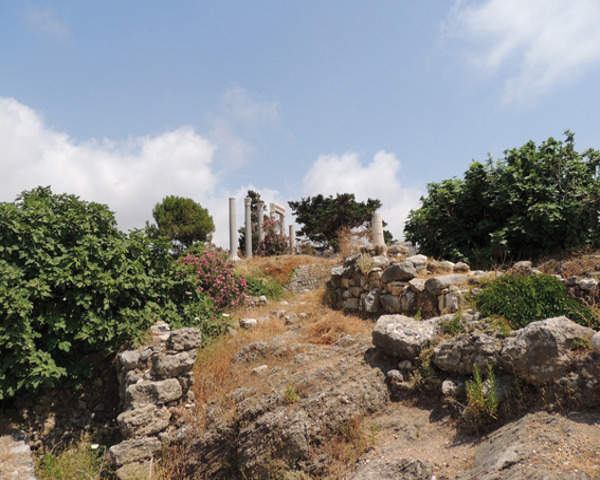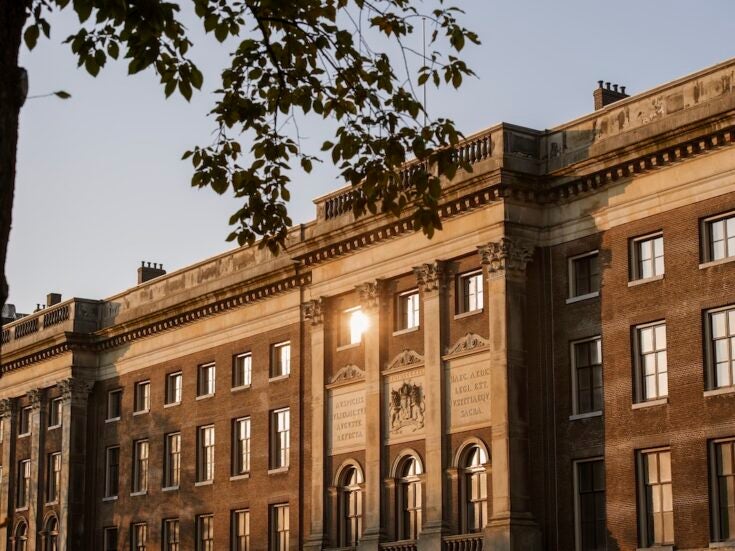

POSTCARD FROM THE CITY OF THE BOOK
With regional tensions high, now is, sadly, a marvellous time to take in the splendours of Lebanon’s multilayered historic site of Byblos
WE WERE WALKING down the one, narrow tourist street in the Lebanese town of Byblos. Among the merchants selling vibrantly coloured scarves and dusty faux antiques was a display of fossils. This, we soon discovered after we had crossed the threshold, was no ordinary souvenir shop.
Memory of Time is dedicated to quarrying fish fossils — patiently splitting stone after stone — from a small patch of mountain. The family who do this, now in its third generation, think of themselves as scientists; their exhibits go to museums all over the world. You can’t go far in Lebanon without touching history — sometimes remote and unfathomable, often ancient but grimly reminiscent of modern times. The fossils reach back to an epoch when Europe was located somewhere around the Caribbean, 100 million years ago.
Meanwhile, the harbour at Byblos is redolent of the 1960s, when Pépé Abed, clad in captain’s cap and embarrassingly short shorts, played host to countless glamorous women, whose photographs adorn the walls of Chez Pépé where we ate lunch.

Jeweller, diver and sensualist, Pépé personified the hedonism of Lebanon’s playboy years. But he was also a reasonably serious marine archaeologist, whose trophies — sea-worn statues, capitals of columns, amphorae — are displayed in a little museum behind the restaurant. I recommend a visit to pepeabed.com if you need cheering up.
Or even better, see Byblos itself. But don’t expect the joint to be jumping. Tears came into the eyes of our guide, a former history teacher, when he talked about prospects for tourism in Lebanon. People watch the news from Syria and stay away — making it, for those of us who dislike crowds, a very good time to come. If only we had summoned up the courage to go to Baalbek, one of the greatest classical sites in the world: I’m told it’s deserted. At Byblos, an hour’s bumpy drive north of Beirut, the harbour is as sleepy as it was before Pépé kissed it briefly into life.
To be closed off from the rest of the world is against Lebanon’s nature. Byblos is typical of the cities along the coast: its origins lie in trade. In ancient times, the hillsides behind the port were green with a tree that now shades the stateliest of England’s country houses — the cedar. The Egyptians needed its resin for mummification. The traders who sold it to what was, 7,000 years ago, the most powerful empire on earth brought back ideas about the afterlife which they tacked on to cults at home.
Other influences were imposed by conquerors. While my son William and I were inspecting a cannonball, fired from a Turkish ship and still lodged in the wall of a fortification, our guide rattled through the numerous empires that have annexed this stretch of the Mediterranean coast at one time or another: Phoenician, Egyptian, Persian, Assyrian, Greek, Roman, Armenian, Byzantine, Arab, Seljuk. The result was a palimpsest of different cultures.
You can see this in the excellent National Museum in Beirut, nearly eclipsed in the Civil War but now risen splendidly. Around the 5th century BC, the people of Tyre went in for plain marble sarcophagi with rounded lids, out of the end of which sprouts a perfectly formed Greek head. Cultural pluralism still rules. Every evening, the call to prayer mingles with the party music which is broadcast, at top volume, from fashionable night spots. Hizbollah may be part of the government, but Beirut’s main synagogue has been restored.
Lasting forts
We’d come to Lebanon for the castles. The crusading armies, made up of religiously inspired ruffians and opportunists who were prepared to risk extreme hardship, disease and battle for the double whammy of plunder in this world and Heaven in the next, arrived uninvited in 1098 and stayed for nearly 200 years. Their works were mighty. Testimony to their choice of site, as well as their ruggedness, is that some of those in Syria are still in use; the magnificent fortress of Crac des Chevaliers, dominating the Homs Gap in Syria, is said to have been damaged in the recent fighting.
This being Lebanon, the castle at Byblos is not just the creation of some evil-smelling knights (in this case Italian), sweltering under the Levantine sun. Its very fabric incorporates a much older history. The builders reused stones, already quarried and shaped, of which there was a plentiful supply nearby.
The fact that they were, until then, built into temples and palaces did not trouble them. To bind together the massive walls, they inserted circular granite columns of the Roman period. The Crusaders’ two centuries of occupation were little more than an eyeblink to a city whose history goes back as much as 9,000 years.
Temple town
Within the lifetime of old men still living at Byblos, some of its layers have been peeled back. Our guide’s grandfather used to live on the site of the Phoenician town. One by one, homes such as his were bought by archaeologists and torn down. In the 1920s, they found the Temple of the Obelisks, built around 1900 BC to replace an earlier temple.
Its courtyard was crowded with sacred stones, shaped like Egyptian obelisks but on an almost pocket scale. Around them, set into niches and gathered in buried jars, were armies of bronze figurines — stick men in loincloths and conical hats, often gilded.

On the sandstone hillock that gives Byblos its alternative name of Gubal — ‘little hill’ in Phoenician — is the necropolis. The kings of Byblos dug deep shafts into it, filling the holes with sand. On the sand they placed their sarcophagi, along with treasure to help them through the afterlife. Little by little, the sand was removed, and the sarcophagi sank to the bottom of the shafts, which were then filled with earth. All but one of the sarcophagi were robbed; in the last one, archaeologists found a gold mask and jewellery.
We went down the tunnel that leads to the burial chamber, where the sarcophagus still stands. ‘Just be careful here in the darkness,’ said our guide cheerfully. ‘There are a few holes you can’t see.’ Another of the sarcophagi, now in the National Museum, became a treasure in its own right: less for the crude frieze of figures in Egyptian loincloths brushing flies from the King’s food, circa 1300 BC, than the curse of circa 1000BC (the sarcophagus was reused) against grave robbers. It provides the longest extant text in the Phoenician script.
The name ‘Phoenician’ derives from the Greek for purple. Tyre’s riches derived from the purple dye that came from molluscs. Shell middens 40 metres high have been found. And from around Sidon comes some of the earliest glass.
But the ingenuity of the cities of what was then Canaan did not extend to politics. Each comprised a mini-state of its own, which could easily fall victim to invaders. Today they may be incorporated into a country, but it is, in relation to its neighbour Syria, a very small one.
Beside the rooftop swimming pool of the Le Gray hotel, I met its creator, Gordon Campbell Gray, a Scot who finds the dolce vita of Lebanon more agreeable than the Renfrewshire in which he grew up. ‘It has such a wonderful history, and such potential,’ he tells me. ‘All it needs is peace.’
Read more on travel from Spear’s
Don’t miss out on the best of Spear’s articles – sign up to the Spear’s weekly newsletter






